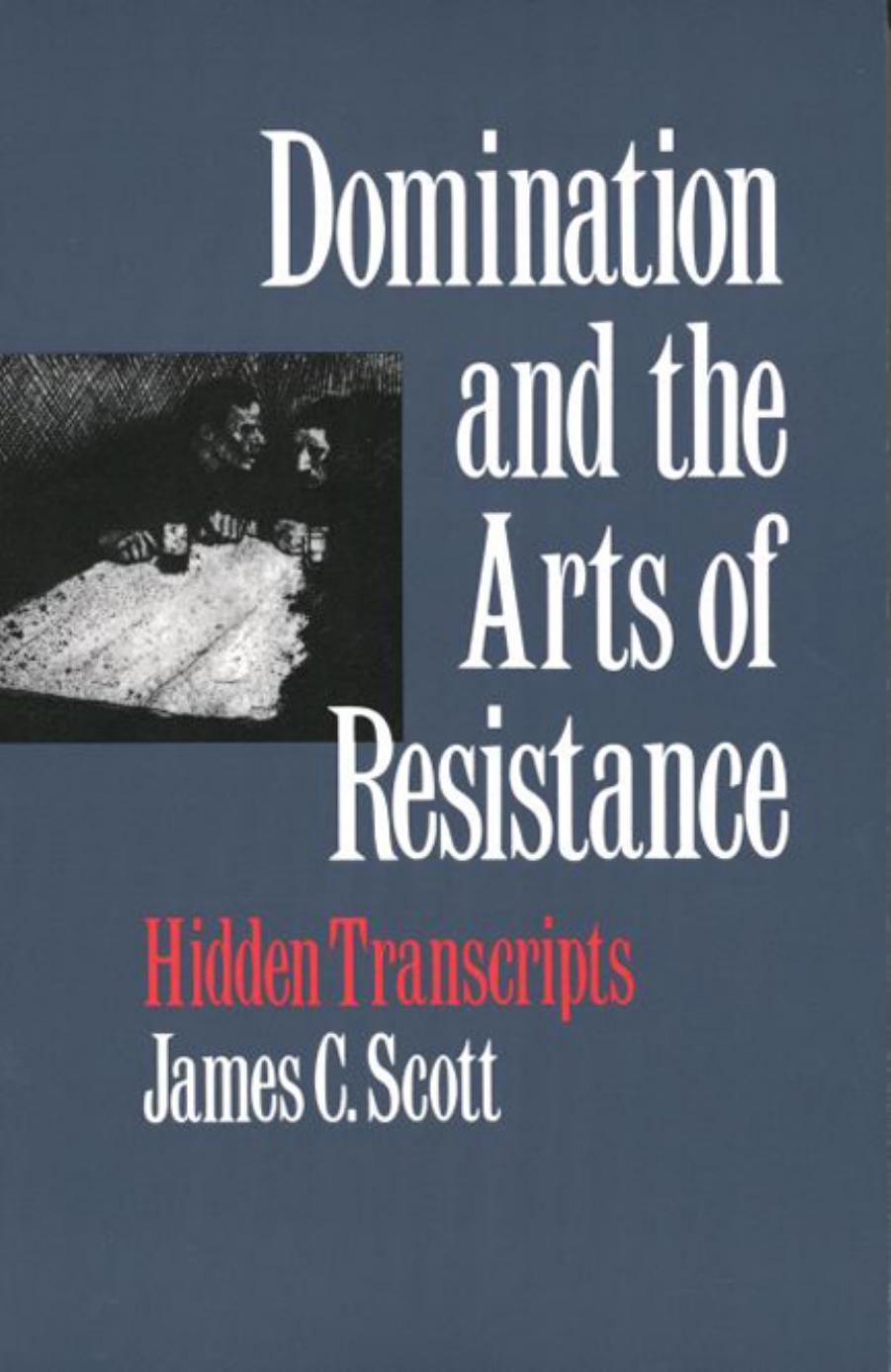Domination and the Arts of Resistance: Hidden Transcripts by James C. Scott

Author:James C. Scott [Scott, James C.]
Format: epub, pdf
Tags: editing
Published: 0101-01-01T00:00:00+00:00
Sites and Carriers of the Hidden Transcript:
Degrees of Freedom
That's why the cabaret is the parliament of the people.
â BALZAC, Les Paysans
The social sites of the hidden transcript are those locations in which the unspoken riposte, stifled anger, and bitten tongues created by relations of domination find a vehement, full-throated expression. It follows that the hidden transcript will be least inhibited when two conditions are fulfilled: first, when it is voiced in a sequestered social site where the control, surveillance, and repression of the dominant are least able to reach, and second, when this sequestered social milieu is composed entirely of close confidants who share similar experiences of domination. The initial condition is what allows subordinates to talk freely at all, while the second ensures that they have, in their common subordination, something to talk about.
For any relation of domination it ought to be possible to specify a continuum of social sites ranged according to how heavily or lightly they are patrolled by dominant elites. The least patrolled, most autonomous sites would presumably be the most likely locations for recovering the hidden transcript. In antebellum U.S. slavery, for example, control was clearly most pronounced in the organization of work lifeâthe site of the direct appropriation of laborâand in public displays of mastery and deference. Social autonomy for slaves was thus minimized before whites, in the big house, and when working. Outside this heavily patrolled sphere there were domains of greater autonomy in the slave quarters, in the circles of family and friends, which found expression in folktales, dress, language, song, and religious expression. Further still from the center of close surveillance were those social spaces most effectively sequestered from domination, those that might, on that account, be considered the privileged sites for the hidden transcript. These might include the hidden hush arbors where protected speech, singing, religious enthusiasm, dreams of deliverance, schemes for escape, plots of rebellion, tactics for pilfering, and so on could be discussed in relative safety. In the words of Henry Cheatam, an ex-slave, âdat overseer was a devil. He wouldn't allow no meetin' on de place. Sometimes us would slip down de hill and turn de wash pot bottom upwards so de sound of our voices would go under de pot, and us'd have a singin' and prayin' right dere.ââ19
The term social site may convey the wrong impression if we take it to mean only a sequestered physical location. It might, of course, be just that; slaves made use of secluded woods, clearings, gullies, thickets, ravines to meet and talk in safety. They might also conspire to transform a site that was not so v intrinsically safe by actively sealing it off from surveillance. In the quarters at night slaves might hang up quilts and rags to deaden the sound, circle on their knees and whisper, and post a watch to ensure their seclusion. The creation of a secure site for the hidden transcript might, however, not require any physical distance from the dominant so long as linguistic codes, dialects, and gesturesâopaque to the masters and mistressesâwere deployed.
Download
Domination and the Arts of Resistance: Hidden Transcripts by James C. Scott.pdf
This site does not store any files on its server. We only index and link to content provided by other sites. Please contact the content providers to delete copyright contents if any and email us, we'll remove relevant links or contents immediately.
| Africa | Americas |
| Arctic & Antarctica | Asia |
| Australia & Oceania | Europe |
| Middle East | Russia |
| United States | World |
| Ancient Civilizations | Military |
| Historical Study & Educational Resources |
Magic and Divination in Early Islam by Emilie Savage-Smith;(1498)
Ambition and Desire: The Dangerous Life of Josephine Bonaparte by Kate Williams(1343)
Bohemians, Bootleggers, Flappers, and Swells: The Best of Early Vanity Fair by Bohemians Bootleggers Flappers & Swells- The Best of Early Vanity Fair (epub)(1341)
Papillon by Henry Charrière(1306)
Twelve Caesars by Mary Beard(1253)
Operation Vengeance: The Astonishing Aerial Ambush That Changed World War II by Dan Hampton(1134)
What Really Happened: The Death of Hitler by Robert J. Hutchinson(1127)
London in the Twentieth Century by Jerry White(1111)
Time of the Magicians by Wolfram Eilenberger(1086)
Twilight of the Gods by Ian W. Toll(1083)
The Japanese by Christopher Harding(1082)
Lenin: A Biography by Robert Service(1042)
The Devil You Know by Charles M. Blow(984)
A Social History of the Media by Peter Burke & Peter Burke(936)
Freemasons for Dummies by Hodapp Christopher;(921)
Napolean Hill Collection by Napoleon Hill(901)
Henry III by David Carpenter;(890)
The Churchill Complex by Ian Buruma(879)
The Rise and Triumph of the Modern Self by Unknown(877)
